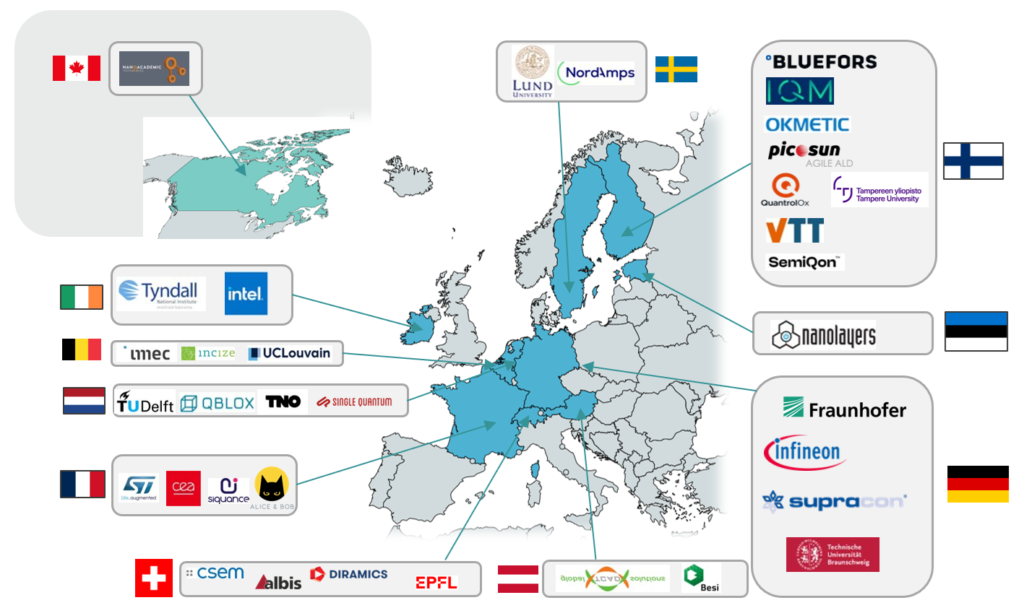A joint EU step towards the era of cryogenic classical and quantum microsystems, a giant leap towards….
The ARCTIC (“Advanced Research on Cryogenic Technologies for Innovative Computing”) project intends to establish a complete and comprehensive European supply chain for cryogenic photonics, microelectronics, and, in general, cryo-microsystems around the emerging quantum computing industry and different cryo-enabled ICT applications.
- “The performance requirements asked from electronic devices and circuits at cryogenic temperatures are quite different compared to those at room temperature. Especially when interfacing very sensitive applications such as quantum processors, all aspects of microelectronic technologies need to be optimized”, says Alexander Grill, scientific leader of ARCTIC at imec.
To be useful in real-world applications, quantum computers would require thousands to millions of physical qubits, which, besides being a huge number in itself, also requires an enormous amount of control and interfacing machinery in order to efficiently operate and control the quantum computer. Usually, this machinery is operated at room temperature. However, for quantum computers based on qubits operated close to absolute zero Kelvin inside a cryostat. When upscaling the number of qubits, the number of possible signal lines fed into the cryostat is limited. This is due to the restricted space, the heat transported through the wires and the signal integrity (due to long wires).
To overcome these constraints, ARCTIC brings together 36 partners from 11 countries, coming from industry, academia and leading RTO’s to establish a complete and comprehensive European supply chain for cryogenic photonics, microelectronics, and, in general, cryo-microsystems around the emerging quantum computing industry and different cryo-enabled ICT applications. This includes the development of materials and fabrication processes, novel simulation approaches, heterogenous packaging, as well as the optimization of devices and circuits specifically designed for cryogenic operation.

NordAmps: Driving Innovation in Cryogenic ADC Technology for Quantum Computing
NordAmps is responsible for demonstrating a direct sampling concept based on a time-interleaved ADC.
NordAmps will take care of the implementation by using III-V nanowire switches and bootstrap circuits designed by NordAmps using large- and small-signal models available at room temperature and cryogenic conditions. Layouts will be made, the circuits designed, and the performance simulated. Based on the design, prototype switches for the sample and hold block for the ADC and for the switched capacitors in the DAC, will be fabricated using high transconductance (>3 ms/µm) InAs/InGaAs MOSFETs on Si substrates and using the epitaxial structures developed through this project.
ARCTIC: Uniting Europe’s Innovators to Bridge Gaps in Cryogenic Technology and Quantum Computing
ARCTIC brings together technology developers, technology integrators, modelers, designers, system/application players and end users to ensure a smooth interfacing between respective layers. At the same time, we focus a large fraction of the effort on missing links – among others in the cryo-modelling and standardization space. In addition, we strongly leverage the unique R&D ecosystem in Europe, with RTOs collaborating and forming the bridge between the academic innovation models and the industrial valorization – the latter both at (many) SMEs and large industrial companies at once.
The expected project outcomes are considered as important enablers for highly demanded technologies that can resolve existing problems in areas such as computational chemistry, bio and life sciences, cryptography needed for data protection and cyber security.

